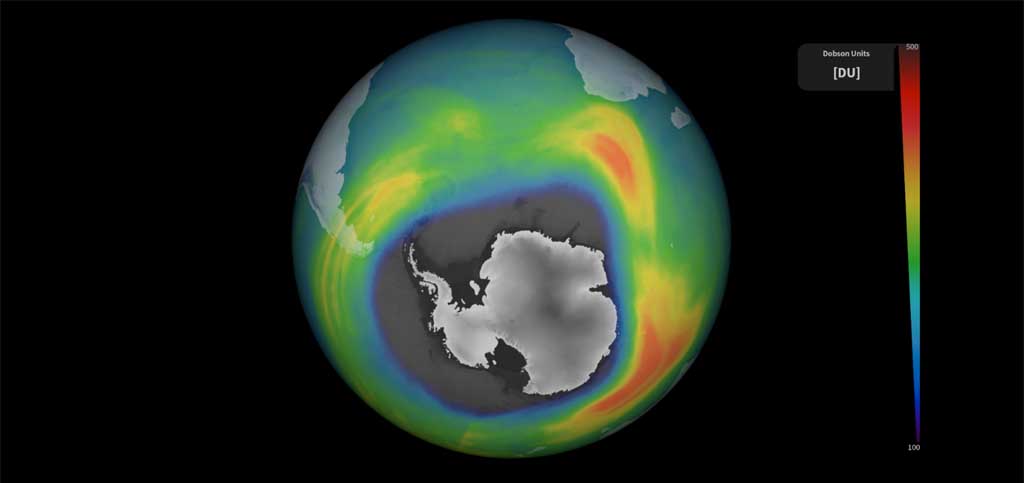
Measurements from the Copernicus Sentinel-5P satellite have shown that the ozone hole over Antarctica in 2023 is one of the largest ever recorded, reaching 26 million square kilometers on September 16, about three times the size of Brazil.
Why is the ozone hole so big this year?
The size of the ozone hole varies seasonally. It increases from August to October and reaches its maximum extent between mid-September and mid-October. As temperatures rise in the stratosphere of the southern hemisphere, ozone depletion slows and the polar vortex becomes weaker. In December, ozone levels return to normal.
The January 2022 eruption of the Hunga Tonga-Hunga Ha’apai volcano may have contributed to this phenomenon by injecting a large amount of water vapor into the stratosphere, potentially increasing the formation of polar stratospheric clouds and accelerating ozone depletion. However, research into the exact impact of this eruption is still ongoing as there have been no similar observations in the past.
The Copernicus Sentinel-5P satellite, launched in October 2017, plays a fundamental role in monitoring the ozone layer. Equipped with the advanced Tropomi imaging spectrometer, it delivers accurate, high-resolution measurements of atmospheric gases, enabling more precise monitoring of air quality and ozone than ever before.
The Montreal Protocol and Ozone Restoration
In the 1970s and 1980s, widespread use of chlorofluorocarbons (CFCs) damaged the ozone layer and led to the creation of the ozone hole over Antarctica. In response to this problem, the Montreal Protocol was enacted in 1987 to phase out the production and use of these pollutants. As a result, the ozone layer is expected to recover and return to normal around 2050.
The unusually large size of the ozone hole in 2023 is a reminder of the continued importance of monitoring and protecting our ozone layer. Copernicus Sentinel-5P’s precise measurements are critical to understanding and addressing this global environmental challenge.

Founded in 1982, Avion Revue Internacional is a leading provider of aviation information in Spanish. Since its inception, it has reflected all aspects of aviation, from commercial aviation to military, aerospace, history, technology and business aviation. Month after month, Avion Revue reports on the latest news and highlights from the world of aviation, both national and international, in Spain and Latin America.

